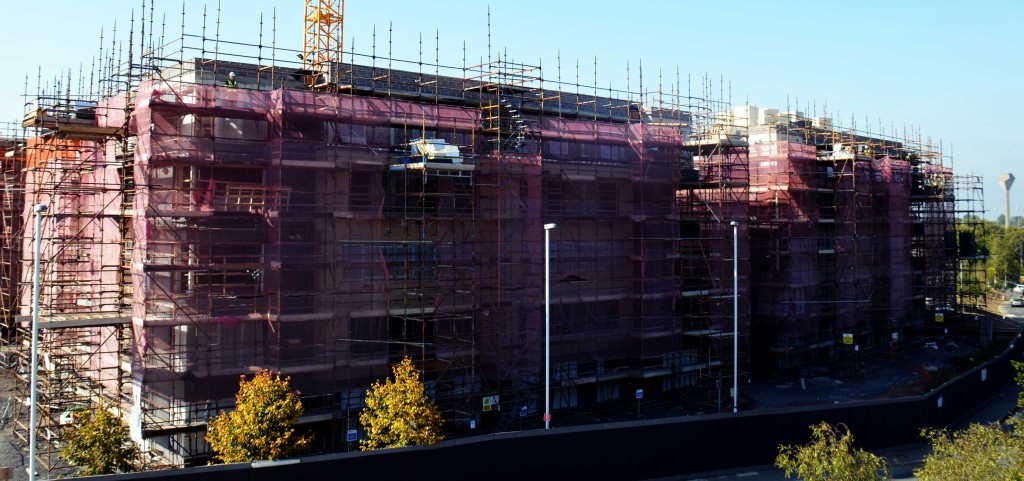Belgrove Student Residences Works
The Belgrove residence village was first constructed in 1989 and forms part of the 2,700 student bed University residence portfolio. Phased refurbishment of these buildings commenced in 2011 and was completed early 2015. The scope of these works included the introduction of a new entrance, in addition to a series of enhanced accessibility and landscape features.
UCD is currently constructing a new 354 bedroom student residence to be located adjacent to the existing Belgrove Residence Village in Car Park 5. The design includes a new landscaped pedestrian route improving the link from the UCD Agnes Maguire, Geary Institute, Hannah Sheehy Skeffington and Humanities Institute Ireland Buildings to both the Newman Joyce Precinct and the academic core of the campus, while also enhancing access to amenities, people movement and wayfinding.

Construction work at the new Belgrove Student Residences site.
The new student residences have sustainability as a core consideration. The residences will be “A” rated in terms of energy efficiency with high levels of insulation and a high-efficiency heating system. Furthermore they will feature an extensive solar PV (Photovoltaics) installation at roof level that will produce a significant portion of the residences day-time electricity demand. In addition to this part of the development will feature “green roofs”. Green roofs have special membranes that allow soil to be placed on top with specially selected plants then grown on the roofs. Green roofs offer a number of significant sustainability related benefits, including storm-water management. Water is stored by the substrate and absorbed by the plants where it is returned to the atmosphere through transpiration and evaporation rather than being sent to drainage systems. Through this process they greatly reduce the amount of storm-water runoff and also act as an attenuation feature, delaying the runoff, which places less pressure on water drainage systems. Further benefits include the fact that they moderate the urban heat island effects, as they absorb the heat of the sun rather than reflecting back heat, they also keep buildings cool in the summer and act as an insulation layer in winter. Green roofs have also been shown to have benefits for biodiversity, providing habitats for a variety of plants and invertebrates.

